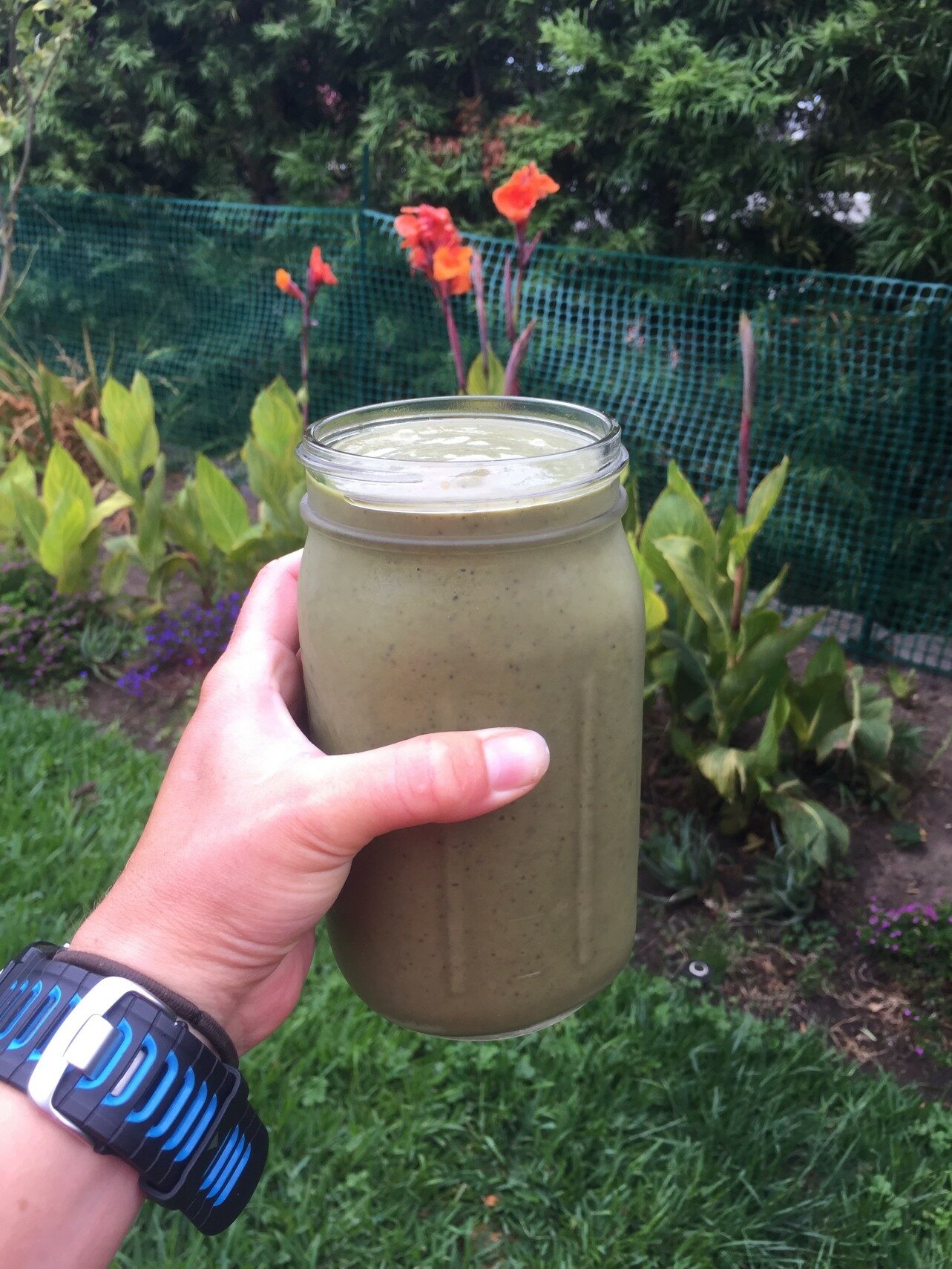An unfortunate side effect of being overly carb conscious or following a low-carb diet is fearing fruit. I was there at one point. I began to view fruit as just another of sugar bomb and avoided it most of the time. While overdoing it on fruit may indeed push your sugar consumption into excess and fruit juices aren’t advised either, whole fruits in moderation are nothing to fear. Let’s not forget that fruits are naturally occurring whole foods rich in nutrients, not processed and manufactured in factories. If you feel like your idea of a clean carb-conscious diet means avoiding fruit because it contains sugar, I encourage you to ease up the reigns and allow more variety into your diet, instead of going down a path that could turn into orthorexia, a new-age eating disorder in which one is obsessed with having a perfect diet of only clean, healthy foods. (Fruit juices, though, are perfectly ok to avoid.)
So that brings me to the idea of smoothies, most of which contain fruit. Are these healthy? Yes and no. It just depends. The other day I was speaking with one of my Ironman athletes who travels a lot and he was grabbing Jamba Juice smoothies at airports thinking that was the best choice. We looked up the nutrition facts and it turned out the smoothie he was getting had good intentions (it was labeled a “green smoothie”) but on closer look it was laden with sugar (66g), low in fiber (4g), low in fat (1g) and low in protein (4g)—an that was just for the small 16 oz size; the large had a whopping 90 grams of sugar while fiber, fat and protein remained about the same as was found in the small! This is a case where a smoothie is just another sugar bomb that will send your blood sugar soaring, and just as importantly it’s lacking in dense nutrition (for example, many smoothies are made with fruit juices not even the whole fruit, thus are lacking nutrients). So the lesson is: Be discerning and research those nutrition facts if you are buying smoothies from chain stores, fast-service joints and restaurants; even “green” smoothies may contain very few greens and may mostly be a lot of high-GI fruits and/or fruit juices blended with yogurt or ice cream, which is not going to be that healthy. Or, if you can and what I do, order a custom smoothie whenever possible.
Meanwhile, if you make homemade smoothies you can really dial in nutrition and flavor to make it a powerhouse snack or meal. It’s even ok if your smoothie has some sugar from fruit; as long as you add an abundance of fat, fiber and protein, this will help stabilize your blood sugar and give you a full variety of macros. Research shows that between 5 to 30 grams of protein and/or fat added to a 50-gram dose of pure glucose will lead to a significant decrease in blood sugar response, and protein has an even stronger effect than fat1. In other words, the fat and protein blunt the blood sugar response so your health stays in check. The fat and protein also delay gastric emptying (one reason blood sugar doesn’t spike as high), which serves to keep you fuller longer1.
This smoothie recipe below has some fruit and is not free of carb and sugar grams, but it is incredibly dense in fat, fiber and protein from really quality whole food sources, so not only are you getting a well-rounded meal or post-workout snack, but also the 16 grams of fat and 28 grams of protein blunt the sugar response so no need to fret the fruit.
‘Everything But The Kitchen Sink’ Green Smoothie Recipe
Ingredients
- ½ c (ish) plain goat yogurt or plain yogurt of choice
- ½ avocado
- ¼ c (ish) almond or coconut milk
- 1 scoop protein powder (I like vital proteins vanilla whey)
- 1 banana
- ¼ c (ish) blueberries (handful)
- 6 leaves dino kale
- 2 stalks celery
- ¼ large cucumber
- 1 carrot
- 6 ice cubes
- 3-10 drops stevia or sweetener, optional
Directions
Add everything to your high-powered blender in order listed and blend well. If you like your smoothies with a crunch you can add unsweetened coconut flakes, crushed nuts and seeds, cacao nibs or paleo granola.
Note that yield from this smoothie is so much that it won’t even all fit into a large mason jar, and you may have leftovers. Much better than a measly 16oz sugar bomb drink from the chain stores 😉 Speaking of, here’s the nutrition breakdown of the Everything Green Smoothie:
Nutrition Facts
- Calories 466
- Fat 16 g
- Cholesterol 36 mg
- Sodium 277 mg
- Potassium 1556 mg
- Carbs 64 g
- Fiber 17 g
- Sugar 28 g
- Protein 28 g
Nutrition facts are using unsweetened almond milk. This smoothie also fulfills 226% of daily Vitamin A needs, 78% of your Vitamin C needs, 51% of calcium, and 10% of iron.
Final Word
Of course, if you are really looking to watch your carb and sugar intake for a specific health reason (pre-diabetes, diabetes, coming off a carb/sugar addition, weight loss goals, etc.) it is perfectly ok to omit the fruit for now (in your smoothie and otherwise). You can sweeten a smoothie like this with something like stevia. However, if you’re an active healthy person and at a normal weight you do not need to worry about the carb and sugar calories that come from moderate intake of fruit—fearing fruit is just unnecessary and may contribute to an overall unhealthy relationship with food, which we’re trying to prevent here at LPC!
References
—Tawnee Gibson

